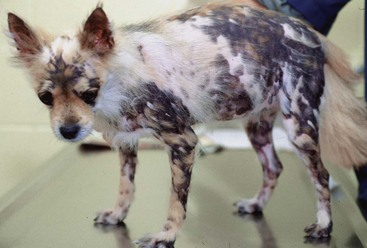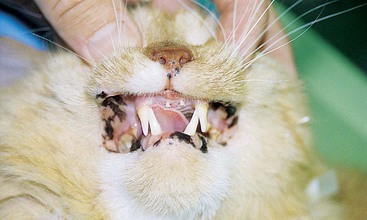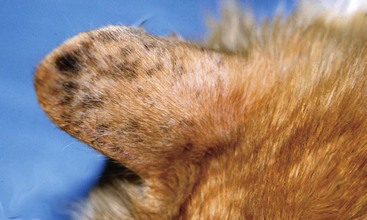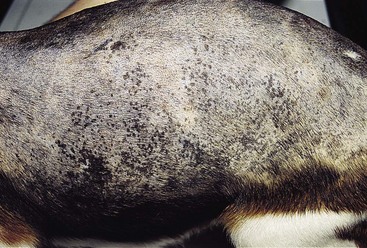CHAPTER | 11 Pigmentary Abnormalities
Postinflammatory Hyperpigmentation
Treatment and Prognosis
2 The prognosis is good. Melanoderma usually resolves slowly after the underlying cause has been treated. Melanotrichia usually resolves at the next shedding cycle.

FIGURE 11-3 Postinflammatory Hyperpigmentation.
Generalized hyperpigmentation associated with resolving erythema multiforme.











